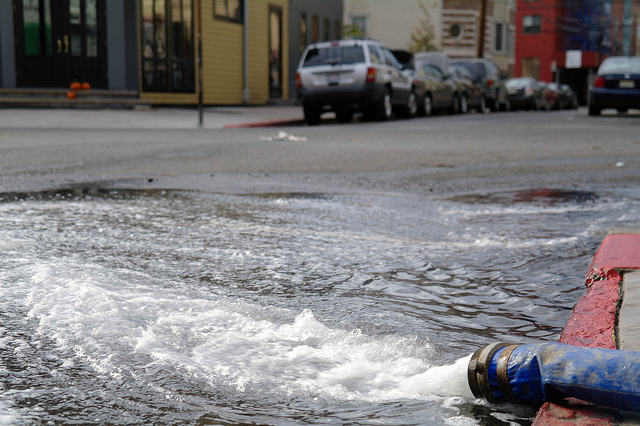New Jersey Future Blog
Growth and the Highlands
February 13th, 2004 by Tim Evans
- Next month, a task force appointed by the Governor will share final recommendations for protecting land in the Highlands of northern New Jersey, a source of drinking water for half the state’s residents.
- Although preservation will get most of the attention, identifying where and how new growth works best in the Highlands will be critical to protecting these vital water supplies, and to the economic and social future of the region and the state.
- There are 30,850 acres of undeveloped and unprotected land in the Highlands currently designated as desired growth areas by the State Plan. Of these, some 20,000 acres are zoned for residential development.
- Determining whether these are the right places and if this is the right amount of land for development will require a regional planning effort.
(Source: Environmental Defense, U.S. Forest Service)
REGIONAL PLANNING KEY TO HIGHLANDS PRESERVATION
When the Highlands Task Force issues its recommendations in mid-March for protecting water supplies, land preservation is certain to be a key part of the strategy. Nearly 70 percent of the Highlands has been mapped as “environmentally sensitive,” yet less than a quarter of the region is permanently protected from development.
The task force is considering recommendations to halt development on some 100,000 acres of critical lands that need immediate protection to safeguard drinking water supplies. Environmentalists have identified another 250,000 acres of farmland, critical wildlife habitat and important recreational areas in need of protection. There isn’t enough money to buy it all.
At the same time, growth will and should continue, to ensure the prosperity of residents living there today and to help accommodate new residents. Ensuring this growth does the least environmental damage while making the greatest contribution to housing and economic prosperity will take more than town-by-town planning and zoning. It will require regional coordination.
True growth management success in the Highlands depends upon establishment of a regional planning group of state and local interests, with authority to create opportunities for new housing and economic development by steering development from environmentally sensitive areas to clearly designated areas where growth makes sense. Legislation to create this group should include tools that give towns what they need to manage growth and protect against skyrocketing taxes: capital infrastructure grants; legal representation by the state; planning and enforcement resources; as well as regional tax sharing, so that towns with protected lands still share in the benefits of the region’s economic growth. Environmental standards for development will also be important to maximizing the economic benefits of growth, while minimizing its environmental impacts.
The right regional system will be supported by mayors concerned about their tax base, developers concerned about growth opportunities, and everyone concerned about water quality.
Other regional planning bodies exist today, in the Meadowlands and Pinelands. The Meadowlands shows us the way on tax sharing. The Pinelands model has been tremendously successful at preservation, but less successful in anticipating the need to support and shape development in the growth areas, where sprawl has continued apace. The Highlands can learn much from these lead efforts, and improve upon the experience in ways that benefit this unique and valuable part of our state.
Preservation alone can’t manage growth. It also takes regional planning coupled with effective regulation and cooperation to ensure these efforts go well beyond “no growth” to smart growth.
















